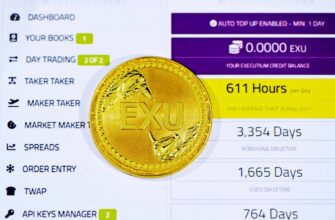## How to Backup Funds Safely: A Comprehensive Guide
Backing up funds is a critical step in protecting your financial assets from loss, theft, or system failures. Whether you’re managing cryptocurrency, digital wallets, or traditional accounts, a secure backup strategy ensures your funds remain accessible and safe. This guide covers the best practices for backing up funds safely, including key strategies, step-by-step methods, and common mistakes to avoid.
### Understanding the Importance of Fund Backup
Before diving into methods, it’s essential to understand why fund backup is vital. Financial data breaches, hardware malfunctions, and human errors can lead to irreversible losses. A robust backup system acts as a safety net, ensuring your assets are protected against unforeseen circumstances.
### Key Strategies for Safe Fund Backup
1. **Cold Storage for Cryptocurrencies** $$text{Cold storage}$$ involves storing digital assets offline, reducing the risk of hacking. Use hardware wallets like Ledger or Trezor, which keep private keys secure. For example, $$text{Bitcoin}$$ users can store funds in a cold wallet, ensuring they’re not vulnerable to online threats.
2. **Multi-Signature Wallets** $$text{Multi-signature wallets}$$ require multiple approvals for transactions, adding an extra layer of security. This method is ideal for high-value assets, as it prevents unauthorized access.
3. **Regular Data Backups** $$text{Regular backups}$$ of digital accounts (e.g., bank statements, crypto wallets) should be stored in secure, encrypted formats. Use cloud services like Google Drive or Dropbox, but ensure they’re configured with strong encryption.
4. **Offsite Storage** $$text{Offsite storage}$$ involves keeping backups in a physically secure location, such as a safety deposit box or a remote server. This prevents data loss from local disasters like fires or floods.
5. **Password Management** $$text{Password management}$$ is crucial for protecting access to your backup systems. Use tools like Bitwarden or 1Password to store and manage passwords securely.
### Step-by-Step Guide to Backing Up Funds Safely
1. **Identify Your Assets** Begin by listing all funds you need to back up, including cryptocurrencies, bank accounts, and digital assets.
2. **Choose a Backup Method** Select a method based on your needs. For example, use cold storage for cryptocurrencies and cloud backups for digital accounts.
3. **Create a Backup Plan** Develop a detailed plan outlining the frequency of backups, storage locations, and recovery procedures. For instance, back up cryptocurrency wallets monthly and digital accounts quarterly.
4. **Implement Security Measures** Ensure all backups are encrypted and stored in secure locations. Use strong passwords and enable two-factor authentication (2FA) for added protection.
5. **Test Your Backup** Regularly test your backup system to ensure it works as intended. For example, restore a backup to a test environment to verify its integrity.
### Common Mistakes to Avoid
– **Using the Same Password for Multiple Accounts** This increases the risk of credential theft. Use unique passwords for each account.
– **Storing Backups in Insecure Locations** Avoid leaving backups in easily accessible places. Use encrypted drives or secure cloud services.
– **Neglecting Regular Updates** Outdated backups may not protect against new threats. Schedule regular updates to your backup system.
– **Ignoring Physical Security** Ensure physical backups (e.g., USB drives) are stored in secure, fireproof locations.
### FAQ: Frequently Asked Questions
**Q: What is the best way to backup cryptocurrency funds?**
A: The best method is to use a cold storage wallet combined with regular backups. For example, store $$text{Bitcoin}$$ in a hardware wallet and back up the wallet private key in an encrypted file.
**Q: How often should I backup my funds?**
A: Backup frequency depends on your needs. For high-risk assets, back up daily. For lower-risk assets, weekly or monthly backups are sufficient.
**Q: Can I backup funds using cloud storage?**
A: Yes, but ensure the cloud service uses end-to-end encryption. For example, use Google Drive with encryption enabled to store digital account backups.
**Q: What happens if my backup is compromised?**
A: If a backup is compromised, immediately change passwords and notify the relevant service providers. Use a recovery plan to restore funds to a secure location.
**Q: Is it safe to backup funds on a personal device?**
A: While personal devices can be used for backups, ensure they are secured with strong encryption and physical security. Avoid storing backups on untrusted devices.
By following these strategies and avoiding common mistakes, you can ensure your funds remain safe and accessible. Regularly review and update your backup plan to adapt to new threats and changing needs.
## Conclusion
Backing up funds safely is a proactive step in protecting your financial assets. By implementing the strategies outlined in this guide, you can minimize risks and ensure your funds are secure. Whether you’re managing cryptocurrency, digital accounts, or traditional assets, a well-structured backup plan is essential. Stay informed, stay secure, and protect your funds with confidence.








